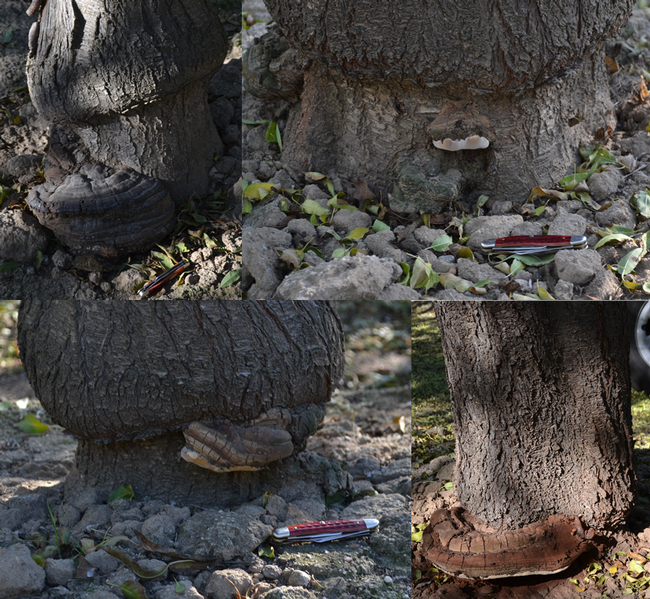
A foreboding fungus is threatening orchards in the San Joaquin Valley

“Ganoderma's been around for a long time,” said Bob Johnson, a UC Davis graduate student who is leading the study for his doctoral thesis under the direction of UC Davis plant pathologist Dave Rizzo. “The tree failure we're seeing may be that we've now reached such a density of almonds here, that the problem just seems more widespread. Or it may be a new Ganoderma species in our state.”
The UC Cooperative Extension nut crops advisor in Fresno County, Mae Culumber, speculated that air quality regulations prohibiting the burning of orchard prunings may have allowed fungi to grow in slash piles in agricultural areas. However, the cause of the problem is currently unknown.
Ganoderma is a genus of fungi with about 80 known species. It is typically considered a forest pest in the U.S. and, in terms of agriculture, poses problems for the palm tree industry in the tropics. The Ganoderma now being found in California agriculture grows in the living heartwood of almond, peach and other stone fruit trees. The presence of the fungus doesn't appear to impact tree production. The only outward sign is development of rather large shelf-like mushrooms on the trunks called conks.
“Once you see conks on the tree, it is essentially dying from the inside out,” Johnson said. “The conks release trillions of spores which wind and water move through the orchard and to neighboring orchards. It's next to impossible to stop the spread.”
A farmer in Hanford recently pulled out and destroyed every tree in his 120-acre orchard because of Ganoderma infection.
“This was a 9- or 10-year-old orchard, just when the grower starts making money after investing in its establishment,” Johnson said. “Instead, his trees were just falling down right and left and he pulled out the orchard.”
Culumber called Johnson out to a Fresno County orchard where the farmer is starting to lose trees.
“In his orchard, every fifth tree has a massively sporulating conk,” Johnson said. “Growers see the conks, but they don't realize they are the infectious part of Ganoderma fungi.”
Culumber said other orchards in the area also have active conks.
“I know of at least two locations within a square mile,” she said. “One is very progressed, and I talked with another grower with early symptoms.”
Johnson is calling on farmers to contact him if their trees have fallen over due to decay in the trunk or if they have seen conks on tree trunks.
“We need to understand the distribution and incidence of Ganoderma infection in order to develop management strategies that will limit the impact of this disease,” Johnson said.
To report trees potentially infected with Ganoderma, contact Johnson at (530) 302-6301 or bobjohnson@ucdavis.edu.

